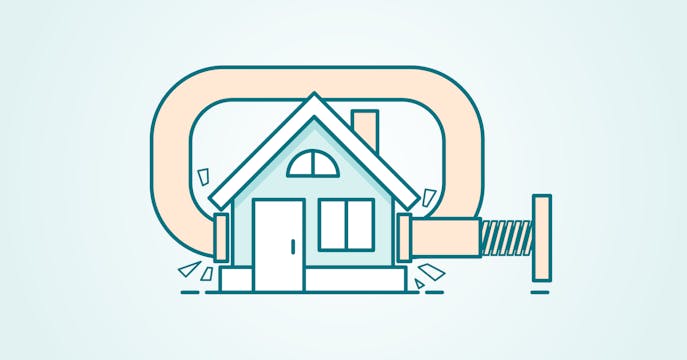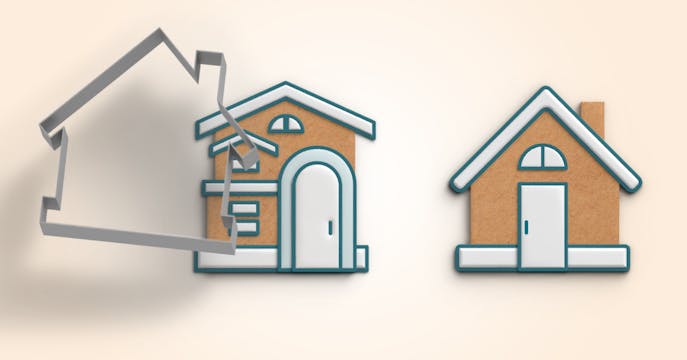OSFI looking to get out of the borrower side.
The borrower-side mortgage stress test was deemed relatively successful in protecting many borrowers and the system from widespread default as interest rates rose.
However, OSFI’s own analysis revealed the stress test didn't deliver the banking higher-risk portfolio management it was hoping for, admitted by OSFI superintendent Peter Routledge in an October 2024 memo: "It really didn't stop a very substantial build-up in mortgages with very high loan-to-income ratios, which I define as 450% loan-to-income (LTI) and greater."
As well, this federal agency doesn't relish the perception that it's responsible for managing a borrower's details, rather than sticking to the institution end of things. "It feels to the borrower like it's OSFI regulating them individually ... and that is not the intent Parliament has ever set for OSFI," stated Routledge.
Borrower payment limits aren't enough to protect banks.
"When interest rates are low, the borrower mortgage stress test could be considered too easy to pass."
– Dan Eisner, founder and CEO of True North Mortgage
When interest rates are low, borrowers' payments could pass the stress test even though they have a higher LTI, creating the conditions for lenders to quickly accumulate higher (uninsured) LTI loans.
But when interest rates and mortgage payments rise, those high-LTI loans now pose a greater risk to a lender's bottom line.
Here's a quick illustration of how rising interest rates increase the bank risk on high LTI loans:
- At a low benchmark interest rate of 1.5%, a borrower with a $500K uninsured mortgage, 30-year amortization, and 600% LTI ratio passes OSFI's stress test due to the lower interest-rate effect on their payments
- The benchmark rate goes up to 3.5%, but this borrower's income doesn't rise accordingly
- Despite passing the stress test at the beginning of their term, they can no longer afford to cover those higher payments at renewal (over $500 more per month)
- The bank now needs to withhold more capital to cover the increased risk of default for all their higher LTI mortgages
- The thicker the high-LTI portfolio file, the more capital needs to be retained
If a lender doesn't retain enough capital (or takes too long to retain it) to cover the LTI risk, the bank system's safety could be undermined — especially if economic conditions deteriorate quickly and widespread default suddenly becomes a reality.
This potential scenario is exactly what sparked the 2008–2009 Financial Crisis. In 2007, U.S. banks' high LTI mortgage exposure began to surface and helped trigger a global economic meltdown.
With interest rates going lower again, OSFI is now looking to reform its regulations beyond a stress test that only regulates borrower payments.
Shifting from individual limits to bank portfolio limits.
Under the bankside LTI regulation imposed earlier this year, OSFI uses a general 15% to 25% portfolio limit rule to restrict a bank's underwriting of mortgages over 450% LTI.
Each bank receives its own percentage limit based on its unique lending environment and is assessed quarterly, with repercussions for exceeding its limit.
OSFI will assess this program for up to a full year before deciding to remove the individual stress test.
It is proceeding with care to ensure that this new tactic effectively balances a bank's ability to react to market instability with the goal of maintaining a healthy, accessible housing market.
How could the stress test removal affect you?
If OSFI is making changes to help banks better manage risk, it stands to reason that the bankside LTI portfolio limit could result in some uninsured mortgage clients seeing higher rates based on their debt-to-income ratios, while others may find it easier to qualify for a mortgage with the stress test removed.
- Mortgage lenders may offer more competitive rates for lower LTI mortgages or clients with lower debt ratios
- Buyers in higher-priced housing markets, like in BC or ON, may have to make more income or find a lesser-priced home to secure a mortgage loan
- The same affordability-challenged buyers may face higher mortgage rates if a lender does offer mortgage approval
- Higher leveraged home buyers may require a mortgage solution in the alternative lending space if they can't find traditional mortgage approval
Would you ever know if a bank is over its 450% LTI limit?
No. Lender by lender, a mortgage client would never be aware of a bank's strategic lending practices.
This OSFI LTI regulation and its details are legally private. Banks are not allowed to disclose their financial situation or portfolio details, nor is OSFI allowed to share this information publicly.





